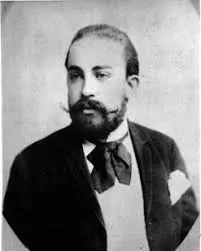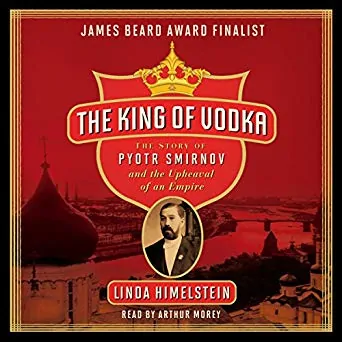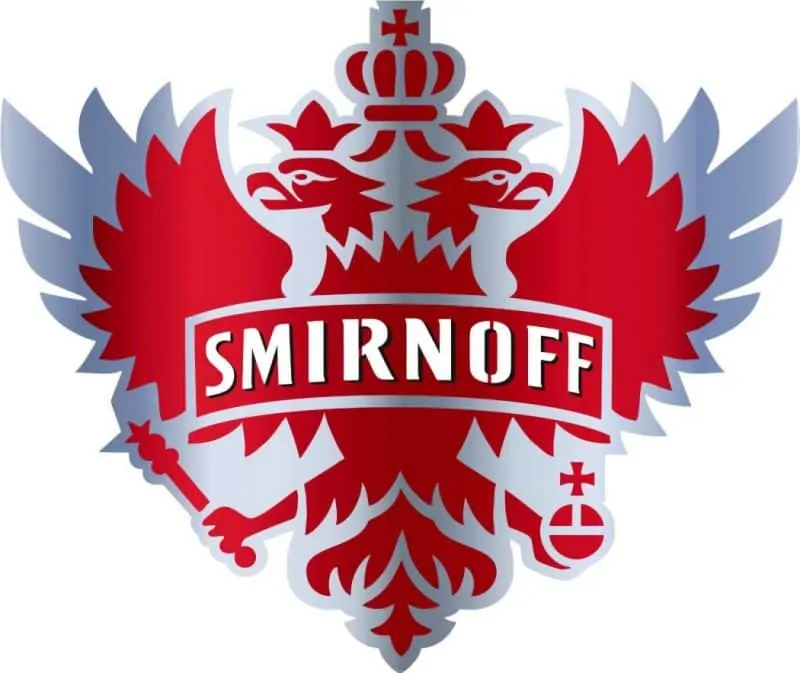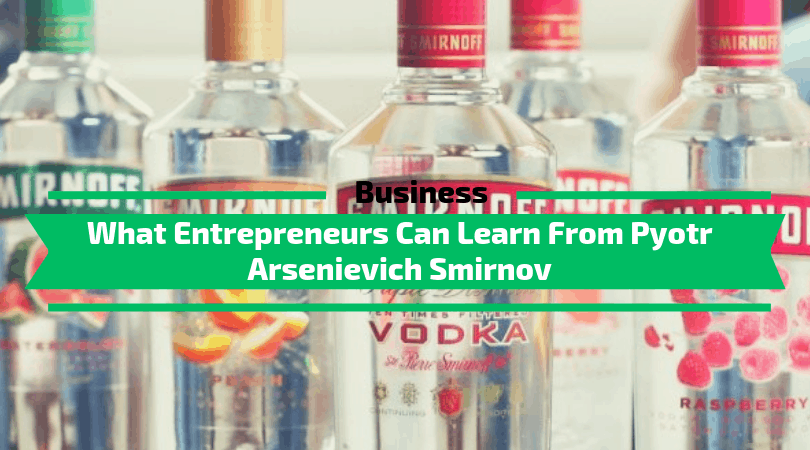Table of Contents
Smirnov and the History of Vodka
Here’s a true rags to riches tale. The story behind Smirnoff vodka’s founder continues to inspire millions of entrepreneurs around the world.
From a tumultuous childhood in rural slavery to becoming one of the wealthiest men in Russia – fans credit his journey to three things.
- Relentless Ambition
- Perseverance
- Strong Imagination
Smirnov’s Life
Pyotr Arsenievich Smirnov was born in January of 1831. I’ll get to the “misspelling” of Smirnoff in a moment. He was born a slave in Kayurovo, Russia. Today, this small town is one of the most popular destinations in the world because it plays a leading role in the development of modern vodka.

After finding his way to Moscow as an illiterate adolescent, Smirnov learned everything he could about business. He taught himself about the commercial world, producing vodka, and marketing alcoholic beverages. Despite having no familial support, or educational background – he persevered.
He had no marketing background, nor machinery or a medium to garner exposure for the brand. Smirnov was a small-time liquor peddler to one of Russia’s wealthiest men. In a short amount of time, he grew to be one of the wealthiest and savviest salesmen, marketers, and entrepreneurs of the era.
His trick: leveraging newfound connections & relationships to achieve his dreams.An Urban Legend
In 1864, after the abolition of serfdom during the Napoleonic wars, Smirnov launched his own vodka distillery near the Chugunny Bridge. His fascination with alcohol frequently devolved into drunkenness, and many of his descendants have fallen victim to alcoholism. Although, Smirnov never became an alcoholic.
According to Wikipedia.com, Pyotr Arsenievich Smirnov is solely responsible for creating Russia’s most famous pre-revolutionary vodka brand under his namesake.
There’s even a book written about him called “The King of Vodka: The Story of Pyotr Smirnov and the Upheaval of an Empire” by Linda Himelstein.

Consequently, Smirnov’s story has become an urban legend of sorts.
In a rather short amount of time, Smirnov became known for pioneering charcoal filtration. Moreover, he was also the first to solicit newspaper ads.
By capturing two-thirds of the Moscow beverage market, his name gained popularity very quickly. The company experienced wild success during Smirnov’s lifetime, but things grew even more interesting shortly after Smirnov’s death in 1898.
The Russian Revolution
Disaster struck in 1917, as the Russian Revolution saw the confiscation of all private industries in Moscow. This included the Smirnov distillery, managed by Pyotr Smirnov’s heirs at the time.
One of Smirnov’s sons, Vladimir, fled Russia determined to save the family business.
Consequently, he was cut off from his own family and the Smirnov empire.
In France, he began his family business under the French interpretation of the family name, and “Smirnoff.” He started over completely and built the company to prominence in France. Then Smirnoff was introduced to America by Rudolph Kunett, of the Helena Rubenstein cosmetics company.
Kunett was granted the exclusive rights to all Smirnoff products sold in North America and the Ste. Pierre Smirnoff, FLS was incorporated in 1933.
Unfortunately, the company only sold 1,200 cases by the end of 1934. They averaged only 1,400 cases by the end of 1937. Out of desperation to keep the business alive, Vladimir contacted the president of Heublein in 1938. Asking the company to act as a sales agent for Smirnoff, this would become the deal that changed everything.
This was exactly what the Smirnoff brand needed. The company sold over 22,115 cases by the end of 1941.
Moreover, in that same year, Smirnoff would encounter another major turning point. The company assumed a new marketing angle.
They began marketing their vodka as white whiskey because this implied it had ‘no taste and no smell’. This changed their brand angle. It appealed to a broader customer base, as white whiskey could be mixed into any beverage, appealing to both men and women.
“This is it!”
A new marketing angle, combined with the national promotion of countless “new age” cocktails popularized the Smirnoff we see today.
Later History
In the 1950s, Heublein bought the worldwide rights to the Smirnoff company from Vladimir’s widow.
Then, W&A Gilbey of England was designated to manufacture and sell Smirnoff vodka in the West. This campaign would include the UK, Canada, Australia, New Zealand, and South Africa (on a royalty basis).
Heublein then bought the original French Smirnoff company, in 1954 also because it would secure the rights to the entire Smirnoff brand, globally.
However, before Smirnoff and Smirnov vodka brands, there was PA Smirnov Company (absorbed by the Bolsheviks during the Russian Revolution). Established in 1864 by Pyotr Arsenievich Smirnov, this proved to be a legal issue. Thus, the American brand entered into a legal dispute with its predecessor.
Legal Matters & Perseverance
In 1991, Boris Smirnov, and heir to the dynasty began selling the vodka as “table wine.” Attempting to avoid legal issues with the American brand Smirnoff, this led to a trademark infringement case.
After several issues like the Russian company’s trademark infringement of the American Smirnoff brand logo, the Russian Smirnov prevailed.
The longstanding feud between the two brands led them toward a joint venture.
After the death of the Smirnov family patriarch, his heirs fought over rights and royalties, slandering the family name. The Bolshevik Revolution ultimately led to the demise of the original family business. And like it’s predecessor, today the American vodka is now manufactured by another company (Diageo).
The planet’s largest purveyor of liquor, Diageo headquartered in Britain, absorbed Russian vodka distiller PA Smirnov Company in 2006.
To accomplish this, Diageo purchased a 75% stake in Smirnov Trading House, a joint venture by Russia’s Alfa Group and Diageo.
Afterward, they were able to successfully market Diageo products in Russia, namely Smirnoff, and Russian products in the US.
Diageo invested more than $50 million in the venture and effectively dissolved the original brand, unifying consumers.
Innovation and Technology

In 1877, the PA Smirnov company in Moscow was awarded the ability to use three Russian State coats of arms in their logo.
In 1886, Smirnov Vodka became the Purveyor to the Imperial Court of Russia.
Between 1874 and 1897, the company won numerous awards for its quality, consistency, and variety at international exhibitions.
Sadly, Smirnov lost its reputation for being a high-quality vodka brand for nearly 50 years, then regained it after World War II with some help.
By the end of the nineteenth century, the Smirnoff vodka brand was raking in the equivalent of nearly $20 million a year.
Since 1975, vodka has outranked bourbon as the US’s most popular spirit solely because of the Smirnoff branding.
In 1978, Smirnoff became the top spirit in the US. In recent years, Bacardi continues to steal the spotlight but the brand still remains a close second.
Smirnoff is now the largest international vodka brand, selling triple that of its closest competitor, Absolut.
Defeating the Competition
Today, things are shifting in the world of adult beverages. In other words, new competitors, lower barriers to entry, and an overall shift away from large-batch, inorganic alternatives is threatening Smirnoff’s stability.
A move toward artisan, gluten-free brands like Tito’s Vodka will inevitably affect Smirnoff’s bottom line.
Competition from luxury brands like Grey Goose, and well-marketed artisan brands like Hell’s Half Acre Vodka, seems to be positioning Smirnoff as the “mediocre” option. Consequently, the brand continues to roll out new flavors. A wide selection of other alcohol products will help to leverage this loss.
Today, Smirnoff vodka is still a popular vodka brand in the West, famous for being the Original Russian Vodka.
It’s known by many for its lavish marketing campaigns, and it’s not surprising that Smirnoff drinkers are considered true vodka connoisseurs. Their brand loyalty and preference for authentic Russian vodka on the rocks has set Smirnoff drinkers apart.
Unlike those who prefer dark liquor, and other alcoholic beverages – Smirnoff drinkers “appreciate history.” It seems the companies’ strong branding will withstand the test of time.
Lessons for Small Business Owners
Don’t waste time.
Anything you dream to do, do it. One of Pyotr Arsenievich Smirnov’s greatest assets was his resilience.
He imagined having a wonderful business and didn’t hesitate to accomplish that goal. He was born into slavery, dirt poor, and had no skills, education, or family background to support his ambitions.
However, he didn’t focus on the reasons why he was going to fail because he disregarded the competition. His only focus was on his vision for the brand.
Make no mistake, his path wasn’t easy. It seems like after higher highs, came were lower lows.
Yet, Smirnov didn’t let that limit his dreams.
Neither did his son.
For instance, after the Russian Revolution ousted him from his father’s company, he started from the ground up in France.
Smirnov optimized his natural gifts of charm, and seductive ability (neuromarketing). He mastered the art of selling others on his vision. More importantly, he utilized those relationships and made them mutually beneficial.
As entrepreneurs, we can learn a lot from Smirnov’s journey. From slavery to multi-generational wealth, this story proves that anything is achievable for anyone. Persevere, and have faith in your efforts.
With patience and diligence, they will pay off.
 Monetize.info We Help You Grow & Monetize Your Online Business!
Monetize.info We Help You Grow & Monetize Your Online Business!





![10 Ways To Find a Buyer for Your Online Business [With Examples]](https://monetize.info/wp-content/uploads/2024/04/10-Ways-To-Find-a-Buyer-for-Your-Online-Business-With-Examples-310x165.webp)

